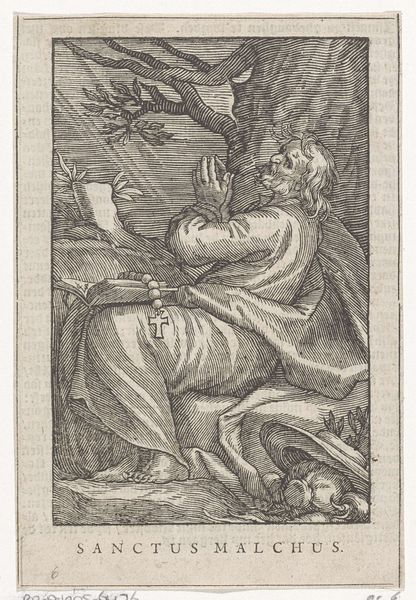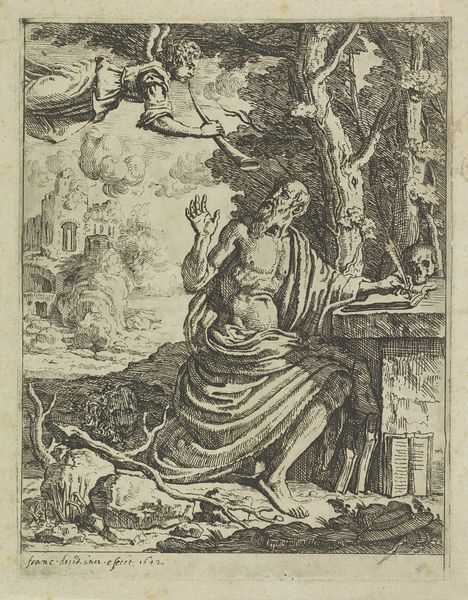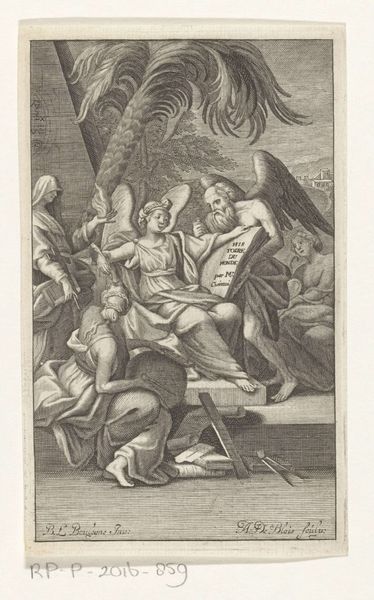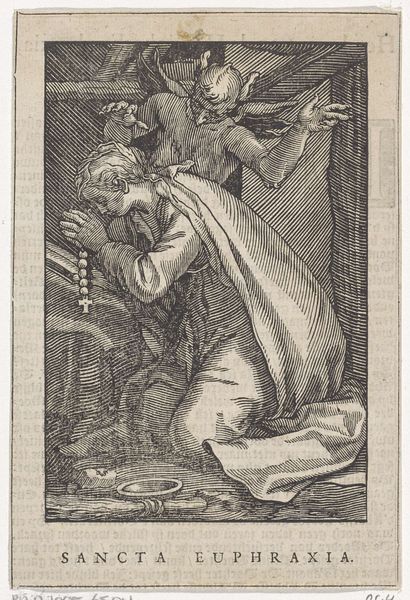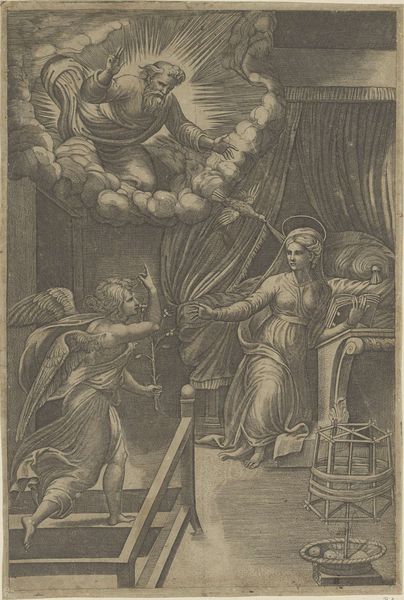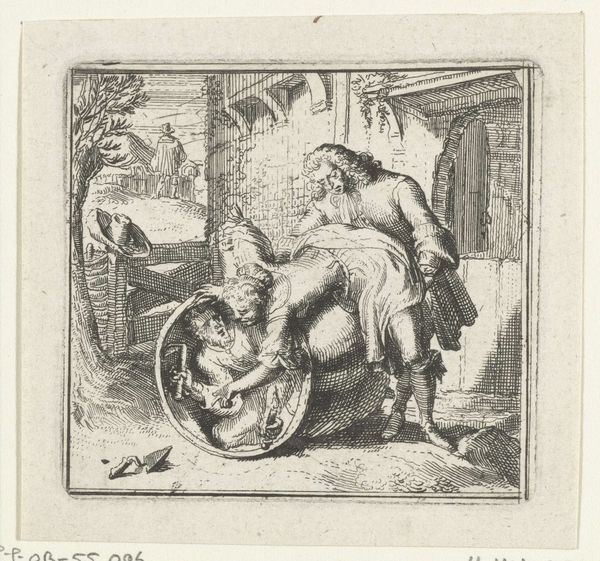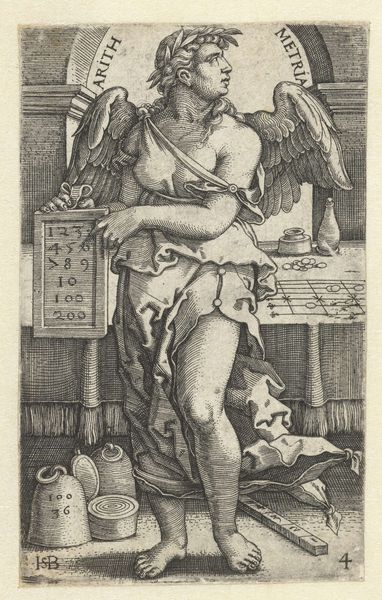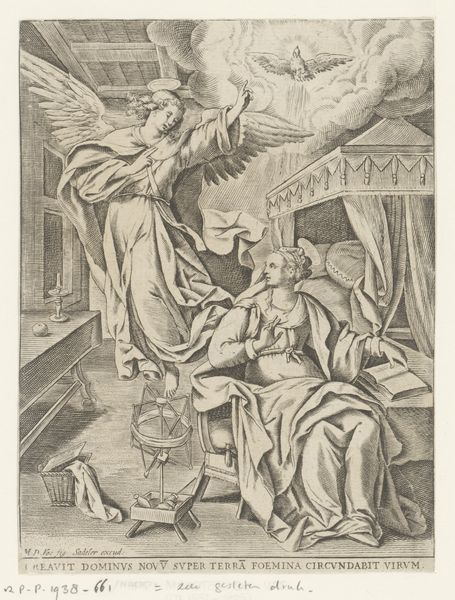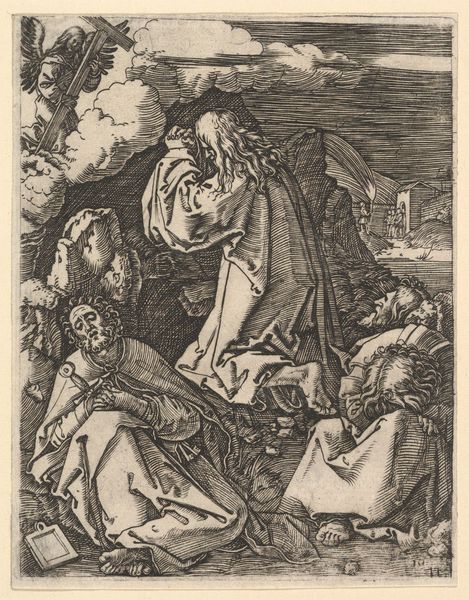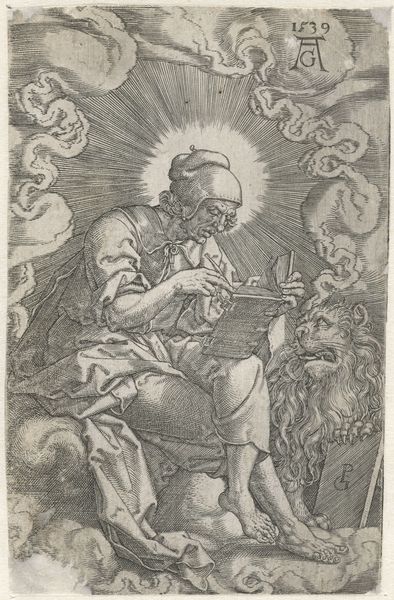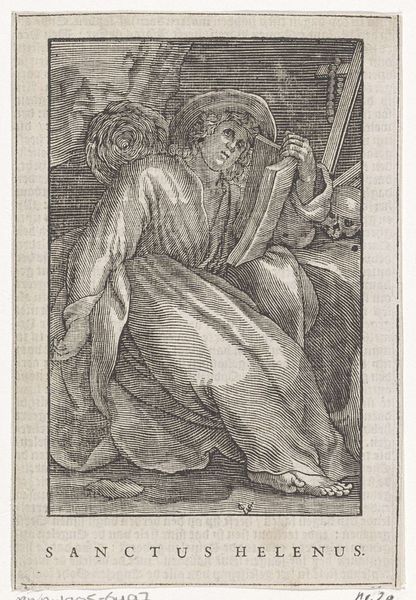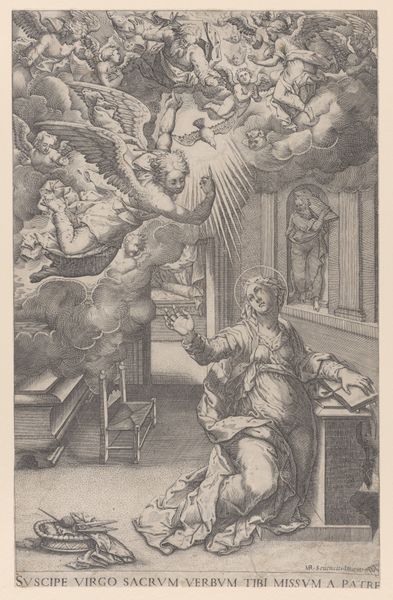
drawing, ink, pen, engraving
#
drawing
#
ink drawing
#
narrative-art
#
pen drawing
#
mannerism
#
figuration
#
ink
#
pen work
#
pen
#
history-painting
#
engraving
Dimensions: height 265 mm, width 435 mm
Copyright: Rijks Museum: Open Domain
Curator: This image from around 1572-1575 is titled "Matthew the Evangelist Writing His Gospel," created by Antoni van Leest. It’s an ink engraving on paper, showcasing a really intricate composition. Editor: It feels immediately weighty, dense, and sort of frantic. All that fine line work really emphasizes the act of *making*. It makes me wonder about Van Leest's workshop and the community around creating this sort of printed image. Curator: Absolutely, the labor here is evident. Notice how the ink defines every fold of Matthew’s robe, every strand of his beard. Also consider the small angel holding open that enormous book – what’s your take on this little figure? Editor: The figure draws your eye immediately, doesn’t it? It speaks to the transmission of knowledge as an act of shared labor and physical burden. These enormous volumes weren't exactly light reading. Did Van Leest make his own inks, do we know? Was the paper specially made? Curator: That is interesting – these are precisely the questions that take me deeper into understanding an artist like Van Leest. We know he operated in the Mannerist style. Look at how he elongated the figures and created a dynamic, almost restless energy. The entire image is vibrating. Editor: Yes! And that very controlled chaos serves a specific social function. These engravings were circulated widely, making religious imagery accessible. How much did a print like this cost? Was it meant for personal devotion or larger public display? Curator: Probably both! A wealthy person might keep it framed in their home, whereas a priest might use it as a visual aid when explaining bible stories. It allowed stories to live beyond expensive paintings and become almost democratized, as visual literacy spread. Editor: Absolutely, the power of print cannot be understated. You’ve given me a great perspective on the democratization effect of a piece such as this. It helps me to move away from simply the appreciation of visual and fine detail and think about material circulation and context. Curator: Exactly. When I meditate on images like this, I can start to place myself back in the 16th century, thinking about who these evangelists really were, how knowledge gets preserved, and how humans are called to serve the sacred, through heavy lifting, so to speak.
Comments
No comments
Be the first to comment and join the conversation on the ultimate creative platform.
